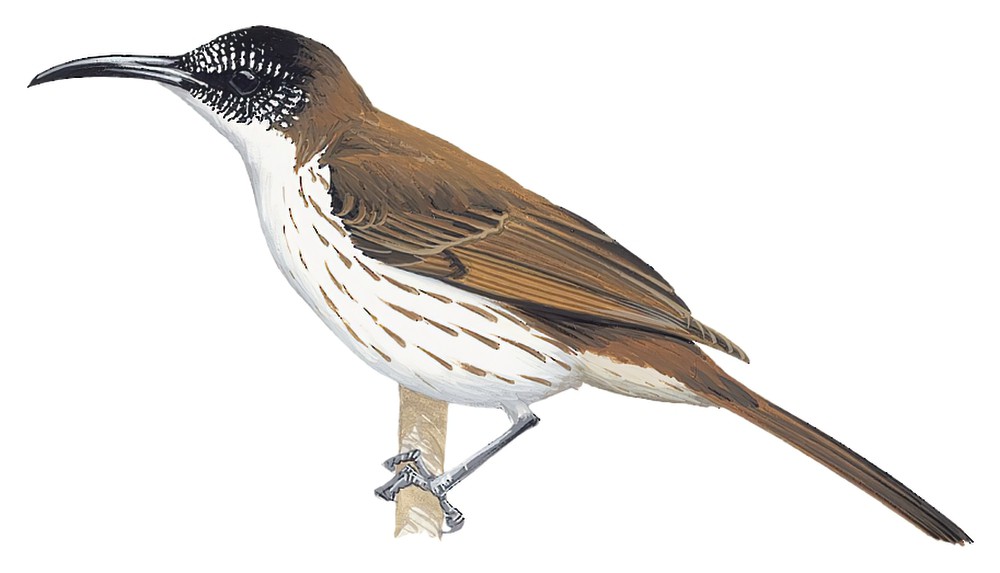Vanuatu Honeyeater / Gliciphila notabilis

Vanuatu Honeyeater
SCI Name:
Protonym: Glyciphila notabilis Bull.Br.Orn.Club 10 p.29
Taxonomy: Passeriformes / Meliphagidae / Gliciphila
Taxonomy Code: nehhon1
Type Locality: Vanua Lava, Banks Islands.
Author: Sharpe
Publish Year: 1899
IUCN Status: Least Concern
DEFINITIONS
GLICIPHILA
(Meliphagidae; Ϯ Tawny-crowned Honeyeater G. melanops) Gr. γλυκυς glukus sweet, sweet tasting; φιλος philos lover; "GLICIPHILA, Sw. Habit of Meliphaga. Bill either shorter, or slightly longer, than the head; the notch in the upper mandible far removed from the tip. Tongue rather short, terminated by numerous filaments. The third and three following quills longest, and nearly equal. Lateral toes equal. Tail even. G. fulvifrons. Lewin, N. H. Birds, pl. 22." (Swainson 1837); "Gliciphila Swainson, 1837, Class. Birds, 2, p. 326. Type, by monotypy, Certhia fulvifrons Lewin = Certhia melanops Latham." (Salomonsen in Peters, 1967, XII, p. 426).
Var. Glyciphila, Glycephala, Glyciphilus, Glycyphila.
Synon. Glycifohia.
notabilis
L. notabilis remarkable < notare to mark < nota mark.
SUBSPECIES
Vanuatu Honeyeater (notabilis)
SCI Name: Gliciphila notabilis notabilis
notabilis
L. notabilis remarkable < notare to mark < nota mark.
Vanuatu Honeyeater (superciliaris)
SCI Name: Gliciphila notabilis superciliaris
superciliare / superciliaris
Mod. L. superciliaris eye-browed < L. supercilium eyebrow.
● ex “Janfréderic” of Levaillant 1801-1804, pl. 111 (syn. Cossypha caffra).
● ex “Sourcirou” of Levaillant 1799 (syn. Cyclarhis gujanensis).
● ex “Ypacahá ceja blanca” of de Azara 1802-1805, no. 377 (syn. Hapalocrex flaviventer).
● ex “Hatí ceja blanca” of de Azara 1802-1805, no. 415 (Sternula).
● ex “White-browed Tern” of Latham 1824 (syn. Sternula superciliaris).
UPPERCASE: current genus
Uppercase first letter: generic synonym
● and ● See: generic homonyms
lowercase: species and subspecies
●: early names, variants, mispellings
‡: extinct
†: type species
Gr.: ancient Greek
L.: Latin
<: derived from
syn: synonym of
/: separates historical and modern geographic names
ex: based on
TL: type locality
OD: original diagnosis (genus) or original description (species)












